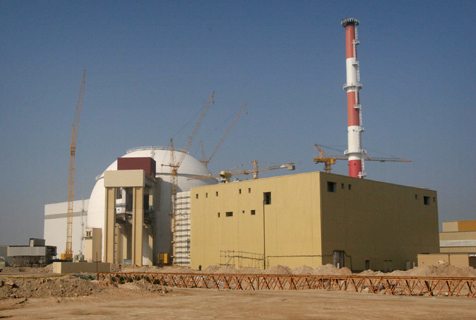Tehran announced plans on Wednesday to triple its capacity to enrich uranium to 20 percent level when it transfers the work to the secretive Fordo plant later this year, a move Washington dubbed provocative.
“We will transfer the 20 percent enrichment from (the central city of) Natanz to the Fordo site this year, under the supervision of the (International Atomic Energy) Agency,” nuclear chief Fereydoon Abbasi Davani was quoted as saying by state television’s website.
“We will also triple the (production) capacity. The 20 percent enrichment will not be stopped at Natanz until the production level is three times higher than its current rate,” he said.
Iran’s uranium enrichment work is currently undertaken in the Natanz nuclear facility, visited regularly by IAEA inspectors.
The announcement brought swift condemnation from Western governments which questioned why Iran needed to up its production of uranium enriched to a level far higher than that necessary to fuel nuclear power stations, although still well short of the 90 percent plus level required for an atomic bomb.
“This decision would involve Iran’s stockpiling of even more near-20 percent enriched uranium without a credible use for this material in the near term,” said National Security Council spokesman Tommy Vietor.
“Provocative steps such as this do not build confidence in either Iran’s interest in meaningful talks or Iran’s nuclear intent.
“We urge Iran to reconsider this decision, to comply with its international obligations without further delay.”
French foreign ministry spokesman Bernard Valero said: “The announcement is a provocation. It heightens the existing concerns of the international community over the intransigence of the Iranian regime and its constant breaches of international law.”
In a statement to the UN nuclear watchdog on behalf of the European Union, Hungary said the 27-nation bloc “notes with particular concern” Iran’s announcement which would “further exacerbate” Iran’s defiance of repeated UN Security Council ultimatums to suspend uranium enrichment.
The Fordo plant was built secretly deep inside a mountain near the Shiite shrine city of Qom some 150 kilometres (95 miles) southwest of Tehran.
Revelations in 2009 about its construction infuriated the West and prompted the United Nations to strengthen sanctions against Tehran.
In February, Iran informed the UN nuclear watchdog that the Fordo plant was prepared to host centrifuges — machines which enrich uranium at supersonic speed — and that it would become operational in the summer.
Abbasi Davani announced in April that Iran would continue to enrich uranium to 20 percent purity to fuel “four to five (research) reactors” which he said Iran plans to build in the near future.
The Islamic republic began its 20 percent uranium enrichment in February 2010, following the collapse of negotiations with the West over the acquisition of fuel enriched to that level for its sole current medical research reactor in Tehran.
On Wednesday, Abbasi Davani said that Iran would produce its first batch of fuel plates for the Tehran reactor by September.
“With high probability, the nuclear fuel in the form of plates will be produced by September,” he said.
World powers have repeatedly said Iran does not possess the technology to make the actual nuclear fuel plates required to power the 5-megawatt Tehran research reactor which makes medical isotopes.
The West accuses Iran of seeking to acquire a nuclear weapons capacity under the guise of its civilian atomic work, a charge Tehran strongly denies.
Despite being targeted by four sets of sets of UN Security Council sanctions over its refusal to suspend uranium enrichment, Iran remains adamant that it will push ahead.










